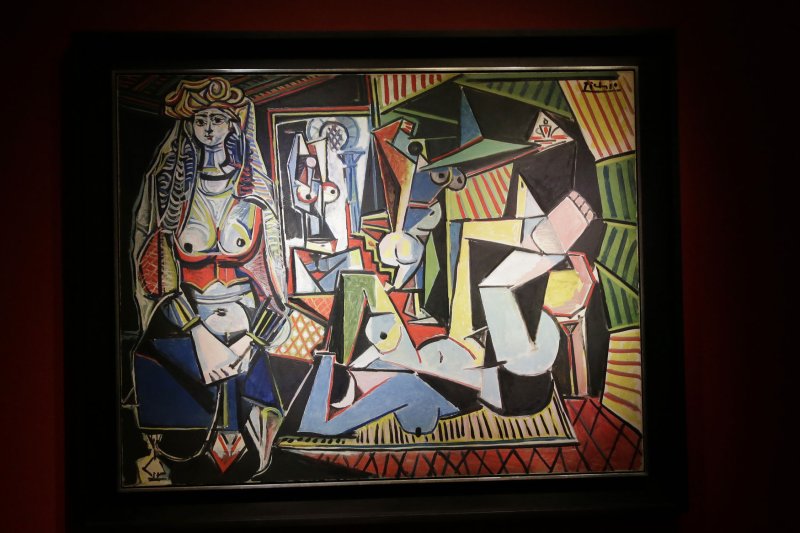A painting by Pablo Picasso entitled "Les femmes d'Alger is on display after it is auctioned at Christie's in New York City on May 11, 2015. Researchers at the University of Liverpool are using artwork from famous painters, including Picasso, to study fractal patterns to detect neurodegenerative disorders before diagnosis. Photo by John Angelillo/UPI |
License Photo
LIVERPOOL, England, Dec. 29 (UPI) -- New research shows that it may be possible to detect neurodegenerative disorders like Alzheimer's disease in artists before they are diagnosed by studying their artwork.
Researchers from the University of Liverpool studied 2,092 paintings from seven famous artists both with neurodegenerative disorders and without.
Two of the artists, Salvador Dali and Norval Morrisseau, had Parkinson's disease, James Brooks and Willem De Kooning had Alzheimer's disease and the other three, Marc Chagall, Pablo Picasso and Claude Monet, had no neurodegenerative disorder.
Researchers used analysis of fractals, self-repeating patterns known as the "fingerprints of nature," to identify patterns in the artwork. This method is also used to determine the authenticity of famous paintings.
The results showed clear patterns of change in the fractal dimension of the paintings in artists with neurological deterioration compared to those without.
"Art has long been embraced by psychologists an effective method of improving the quality of life for those persons living with cognitive disorders," Dr. Alex Forsythe, of the University of Liverpool's School of Psychology, said in a press release. "We have built on this tradition by unpicking artists' 'handwriting' through the analysis of their individual connection with the brush and paint. This process offers the potential for the detection of emerging neurological problems."
Forsythe worked with Dr. Tamsin Williams of Tees, Esk, and Wear Valleys NHS Trust, Vale of York and Maynooth University on the study.
The study was published in Neuropsychology.















